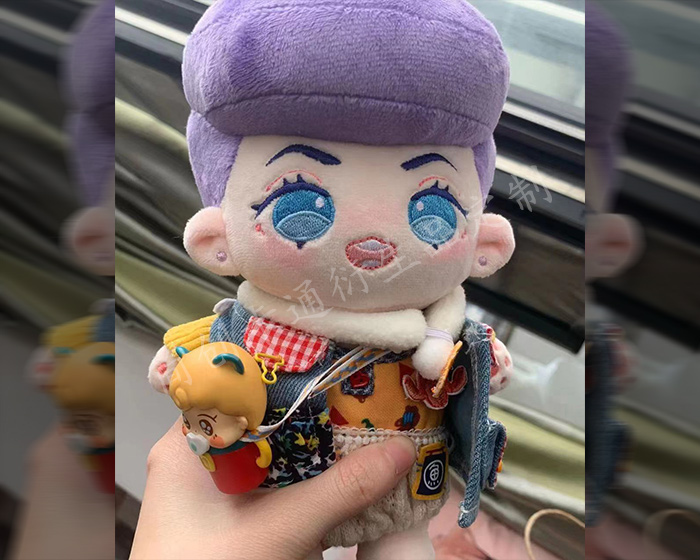Getting rid of dust on stuffed animals is essential for maintaining their cleanliness and ensuring a safe environment for children and pets. Dust can accumulate quickly on these beloved toys, leading to potential allergies and a general sense of uncleanliness. Here’s a detailed guide on effective methods to remove dust from stuffed animals while keeping them safe and intact.
1. Regular Dusting
One of the simplest ways to prevent dust buildup on stuffed animals is to incorporate regular dusting into your cleaning routine. Use a soft, dry microfiber cloth or a feather duster to gently wipe the surface of the toy. This method effectively removes loose dust without causing damage. Be sure to reach all the crevices and folds where dust tends to settle. Dusting once a week can help keep your stuffed animals looking fresh and clean.
2. Vacuuming
For a more thorough cleaning, especially for larger stuffed animals or those with intricate designs, using a vacuum cleaner with a soft brush attachment can be effective. Set the vacuum to a low suction setting to avoid damaging the fabric or dislodging any components. Gently run the brush over the surface of the stuffed animal, paying attention to seams and areas where dust may accumulate. This method is especially useful for toys that can’t be washed frequently.
3. Spot Cleaning
If you notice specific areas of dust buildup or stains, spot cleaning can be an effective way to address these issues. Prepare a mixture of mild detergent and water, and use a soft cloth or sponge to gently dab the affected areas. Avoid saturating the fabric, as excess moisture can lead to mold or mildew. After spot cleaning, use a clean, damp cloth to wipe away any soap residue, and allow the toy to air dry completely.
4. Washing
For stuffed animals that are machine washable, regular washing can help eliminate dust and allergens. Before washing, check the care label for instructions. Place the stuffed animal inside a pillowcase or laundry bag to protect it during the wash cycle. Use a gentle cycle with cold water and a mild detergent. Washing not only removes dust but also refreshes the toy’s overall appearance. After washing, air dry the toy completely to avoid any damage.
5. Freezing Method
An unconventional but effective method for dust mites and allergens is the freezing technique. Place the stuffed animal in a plastic bag and leave it in the freezer for 24 hours. This process kills dust mites and helps reduce allergens. Afterward, take the toy out and vacuum it to remove any dead mites and dust particles. Ensure that the toy is safe for this method and that freezing won’t damage it.
6. Storage Solutions
To prevent dust accumulation in the first place, consider how you store stuffed animals. Keep them in a clean, dry area and avoid placing them on surfaces that collect dust easily. Using storage bins with lids or fabric bags can protect them from dust while also keeping them organized.
Conclusion
Removing dust from stuffed animals is a straightforward process that can significantly enhance their cleanliness and longevity. By implementing regular dusting, vacuuming, spot cleaning, and proper washing techniques, you can keep your stuffed animals looking and feeling fresh. With these tips, you’ll ensure that your cherished toys remain safe for playtime and cuddles, free from dust and allergens.
The following are some examples of plush toys that our factory customizes for customers. Check out if there is one that you like best.
-
Custom Animal Plush
-
Cute Plush Doll
-
Custom Stuffed Animals
-
Plush Toy
-
Plush Dolls
-
Custom Stuffed Dolls
-
Custom Plush Toy
-
Cotton Dolls
-
Weighted Plush Toys
-
Cute Stuffed Animals
-
Custom Pet Stuffed Animal
-
Warmies Stuffed Animals
-
Weighted Stuffed Animal
-
Soft Toys
-
Plush Stuffed Doll
-
Custom Stuffed Dolls
-
Plush Maker
-
Bear Stuffed Toy
-
Anime Plush
-
Custom Stuffed Animal
-
Anime Plush
-
Custom Plush Toy
-
Personalised Stuffed Animal
-
Plush Animal Toys
-
Custom Plush Makers
-
Custom Plushies
-
Toy Manufacturer
-
Rag Doll Making
-
Custom Toys
-
Dog Plush Toys
-
Custom Rag Doll
-
Stuffed Animals
-
Custom Plush
-
Custom Plush Dolls
-
20cm Cotton Doll
-
Jojo Plush
-
Custom Doll
-
Jojo Doll
-
Large Plush Toys
-
15cm Cotton Doll
-
Dumpling Plush
-
Cotton Doll


























